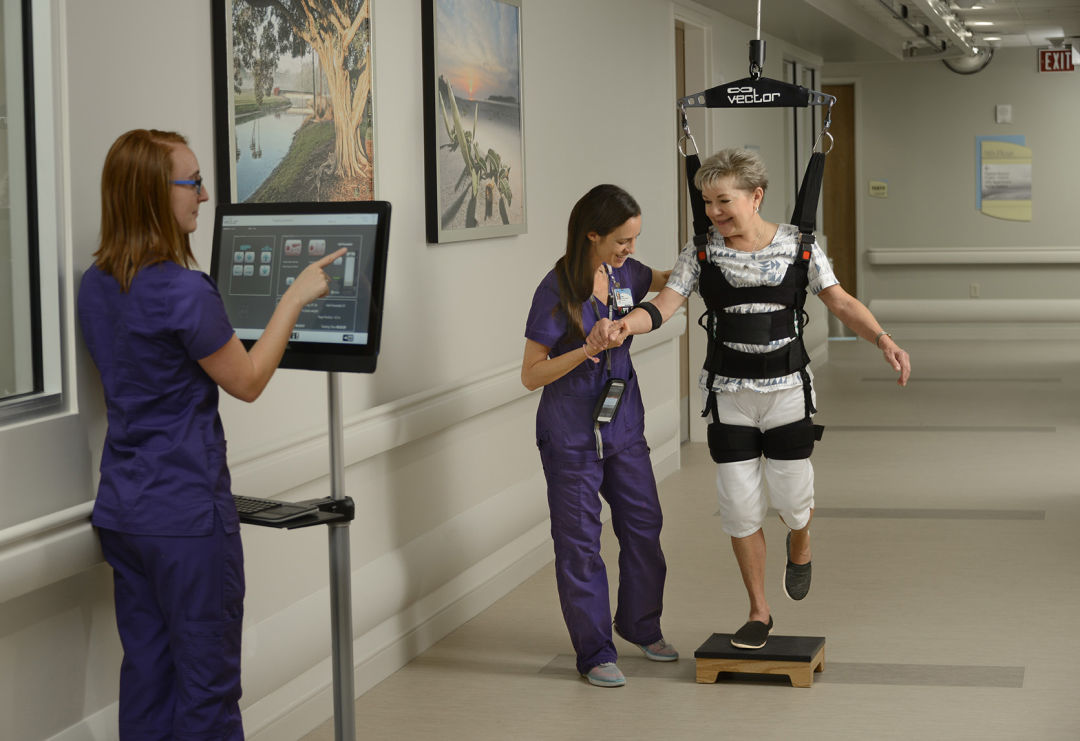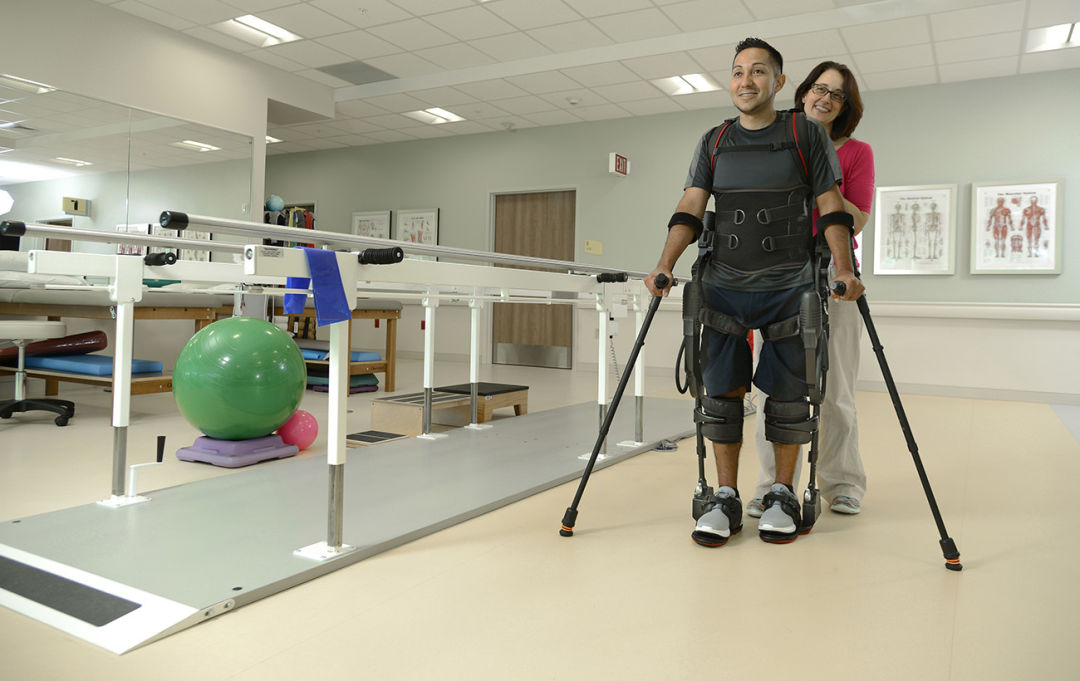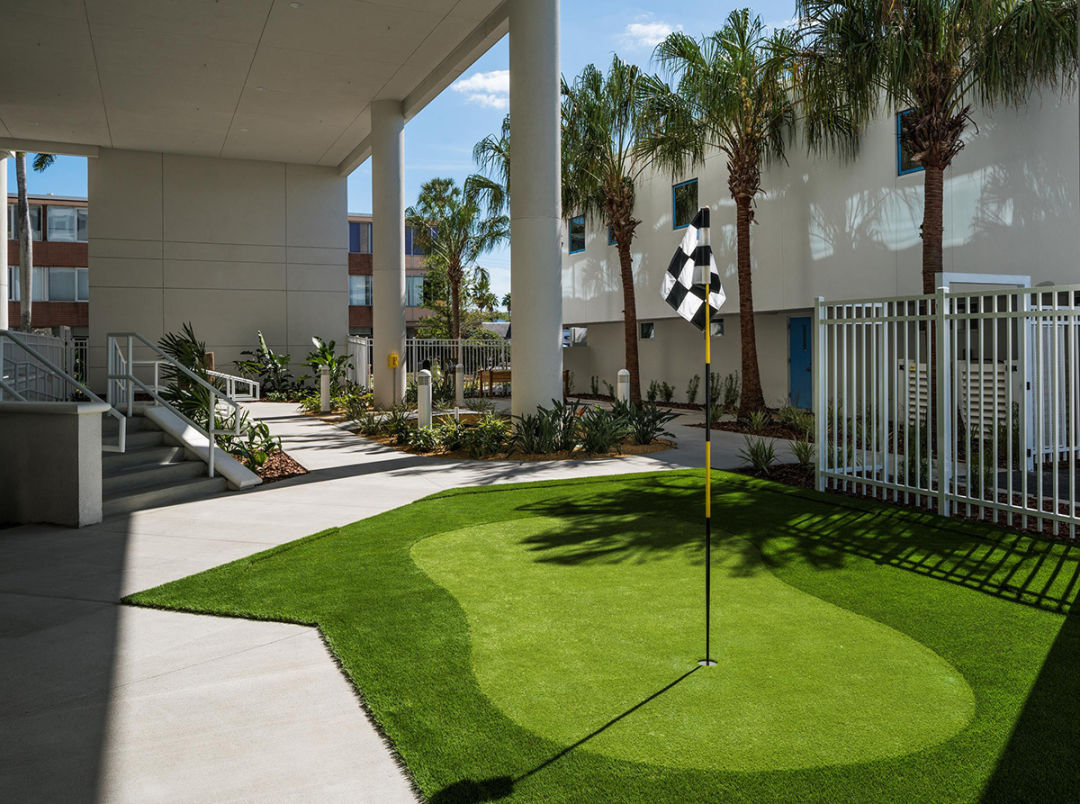Choosing an Inpatient Rehab

Sarasota Memorial’s inpatient rehabilitation program is staffed around the clock by highly trained rehab professionals. The facility features state-of-the-art therapy equipment, including the Bioness Vector system.
When major illness or injury strikes, the journey to recovery may require multiple stops along the way. One of those is often at an inpatient rehabilitation center. If you’re like most people, you’ve never given “acute-inpatient rehabilitation” much thought—unless you or a loved one needed it previously.
In Florida, patients and their families can choose the rehab program that’s right for them, but the search can be overwhelming, especially if you don’t know where to start. Knowing what to look for and what questions to ask can help you navigate the selection process to find the rehab program that best matches your unique medical needs, treatment priorities and required level of care.
We talked with local rehabilitation experts to develop a checklist you can use to narrow down a list of potential inpatient rehab programs. Once you have a shortlist, schedule a tour at your top two or three picks before making a final decision.
(Don’t need inpatient rehab services today? Bookmark this page for quick reference should the need ever arise, or do a little research now to know your options and save time later.)

Be sure your chosen rehab program has adequate equipment and therapy tools to support recovery, like this EksoGT wearable exoskeleton gait trainer at Sarasota Memorial designed to help stroke and spinal-cord injury patients.
What to Look for in an Inpatient Rehab
1. Is the program accredited by a reputable organization?
To earn accreditation, facilities must meet strict standards for care, quality and support, and must pass regular on-site evaluations. Accreditation shows that the healthcare provider is committed to offering top-notch care and service, and strives for continual improvement. In the U.S., the Commission on Accreditation of Rehabilitation Facilities (CARF) is the accrediting body for rehabilitation facilities. If the rehab is hospital based, look for accreditation from the Joint Commission on Accreditation of Health Care Organizations as well.
2.Does it offer specialized rehabilitation programs for your condition?
While a facility may offer a varied list of inpatient rehab services, be sure that it is certified and has a specialty program for your condition. Healthcare providers at accredited rehab centers have special training and certifications.
3. How qualified is the staff?
Are board-certified medical staff available at all times? Are the registered nurses certified in rehabilitation and experienced in acute care?
4. Does the program offer care and service for every stage of rehabilitation and recovery?
As recovery progresses, a patient will transition from inpatient rehab to various other levels of care, including home-based therapy or outpatient rehabilitation. Choosing a facility that offers services for all stages helps ensure a smooth progression and continuity of care through the recovery journey.
5. How are treatment plans developed?
Are the patient and his/her caregivers included in the care planning? Successful treatment plans are tailored to each patient and crafted with input from a multi-disciplinary care team, the patient and the patient’s family or caregivers.
6. How much time is dedicated to individualized therapy?
The Centers for Medicare & Medicaid Services (CMS) requires at least three hours per day of therapy, five days a week for admission to an acute-care inpatient rehab facility.
7. Does the facility have adequate rehab equipment and therapy tools to support your recovery?
8. Is family/caregiver participation in the patient’s rehab encouraged? Are caregivers offered instruction about what the patient will need when they return home?
9. Does the facility offer coping and support services for the patient and family?
Patients often need mental and emotional healing, in addition to physically healing the body.
10. How clean and comfortable is the facility?
Are there outdoor patient visiting and therapy areas? Is the building easily accessible, and are all areas easy to navigate for various mobility aids?

When weighing your inpatient rehab options, consider whether the facilities have outdoor therapy areas, like this one at Sarasota Memorial. The Mobility Garden allows rehab patients to practice life skills in a safe, yet real environment.
Keeping Score: Know Your Options
Find out how the inpatient rehab program at our local community hospital, Sarasota Memorial, measures up to the must-have checklist. Click here for the scorecard.
Housed in the state-of-the-art Rehabilitation Pavilion, the Sarasota Memorial acute inpatient rehabilitation program is the only hospital-based inpatient rehab in Sarasota County. The program is CARF-accredited and certified as a Stroke Specialty provider. The specially designed Rehab Pavilion opened in 2017 and features 54, all-private inpatient rooms; cutting-edge therapy gyms on each floor; interactive tools for practicing daily-living skills; and outdoor therapy areas, including the mobility garden. Click here to experience a virtual tour. Learn more about Sarasota Memorial’s comprehensive programs: Call 941-724-2620.